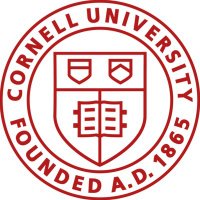
Joseph E. Peters
@joepeterslab
Professor and Chair, Dept Microbiology Cornell Ithaca. Interested in genome evolution and mobile DNA, especially Tn7 and CRISPR-Cas transposition systems
ID: 924991946770272256
https://micro.cornell.edu/research/peters-lab 30-10-2017 13:30:40
458 Tweet
885 Followers
334 Following

🧬 Thrilled to share our latest research on Retrons—a new chapter in this fascinating field! 🌟In this Molecular Cell paper, we reveal how Retron-Eco1 defends against phages. bit.ly/3WOlbsY Check the 🧵below! (1/20)






Researchers Cornell CALS and colleagues have discovered a new method that “jumping genes,” or transposons, use to survive and propagate in bacteria with linear DNA, with applications in biotechnology and drug development. Science Magazine Joseph E. Peters news.cornell.edu/stories/2025/0…

Joseph E. Peters Very cool story lead by Joseph E. Peters reveals another level of how transposons battle with their hosts. Grateful to have had a chance to participate with Popo popo, Joe and the team!


